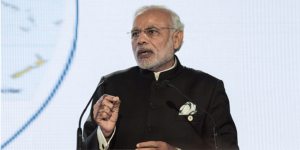The personal finance sector has never been as exciting and competitive as it is today. We have seen waves of transformation in the financial services industry globally over the last few years, but thus far, the thrust of innovation has been largely focused on payments and retail banking.
Over the last two years, however, with the accelerated pace of digital adoption across the spectrum of services that the financial services industry entails, this reality is fast changing.
Ironically, the crippling impact of the COVID-1919 pandemic for humanity and industries the world over, ushered in an era of change and opportunities as a side effect.
We witnessed rapid digital adoption, accelerated transformation, and some much-needed innovation across areas that were confined within the comfort zones of legacy processes and systems. The personal finance industry was one of them.
As someone who has been on the frontlines of the digital payments disruption wave, I had the exciting opportunity to be a part of the sweeping change that the banking industry witnessed in the last decade and was fortunate enough to participate in morphing the way we transact today.
However, the payments transformation, to my mind, is only the tip of the proverbial financial services iceberg. The pandemic forced the financial services industry to take a deep dive into the sea of digital tools that are being developed at lightning speed in innovation sandboxes across the country and the world.
Today, the industry can handpick solutions to bring parts of the business that have been outside the digital realm thus far.
Personal finance was one such space in desperate need of an overhaul, and the pandemic was the perfect storm within which this industry could transform itself into a new avatar powered by the emerging open banking architecture that could help reshape and redefine how we provide credit in a country as large, diverse, and complex as ours.
Opening up the way ahead
In the last few years, as consumer behaviours altered and the swelling millennial demographic with their dramatically different set of priorities and life maps, dictated market trends, we witnessed a rise in the economy of choice.
What this meant for the traditional financial services market is to alter their identity from being traditional service providers to democratising legacy banking systems to make them open, agile, and real-time in their interaction with customers and the way they offer services. The customer feedback loop, in turn, has provided banks with the much-needed insights to enable change by collaborating with fintech innovators who plugin to different services that offer customers with choice, access and safety while transacting with the banking partner for their diverse needs.
Resultantly, banks have also seen a rise in non-performing assets forcing them to take rear guard action and adopt technology for risk monitoring, mitigation, and management as the banking sector reimagined itself.
Working in the hybrid cloud space, deploying blockchain, microservices-based architecture and artificial intelligence has morphed the legacy banking sector into a modern ecosystem that operates increasingly on the principles of an open platform, a paradigm shift that makes banking more convenient and inclusive than ever before.
We can safely say India is now on the cusp of a financial revolution relying on an open banking platform, which the government and the market have collectively built.
This means allowing collaborative solutions to emerge through Application Programming Interfaces (API), allowing customers to make easy, efficient, and quick choices about the services they need in real time, while preserving and securing their data.
A true win-win for all parties – the banks, the fintech innovators and the customer.
Change – its personal
Just as the payments industry transformation proved its merit as we navigated a life changing pandemic, by providing a digital transaction framework to ensure business and livelihood continuity, the next frontier of change is to bring the open banking ecosystem to the doorsteps of personal finance.
With the employment landscape remaining chequered and expenses spiralling upwards, we see the burden of expenses only climbing in the foreseeable future, thereby reducing the opportunity to save. Unfortunately, however, India has always been a credit poor society, with little to no avenues for the end consumer to avail credit that can support the economic growth cycle.
Today, the shift is slowly taking place with fintech providing parts of the solutions through lending platforms and other Buy Now Pay Later (BNPL) avenues. The reach and scale that the banking industry in India already has, however, remained untapped with both parts of the ecosystem working in silos.
The need of the hour is therefore to pull the same canvas of open banking architecture over India’s credit rails to provide the much needed impetus to India’s credit systems.
APIs can be the elixir of life for the personal finance industry which is largely dependent on human touch as of now.
Creating digital pathways that move it away from only “human” to a “human assisted” model can enable faster adoption of products, swifter approvals, and more secure transactions, while giving banks the added advantage of deep consumer insights that can support in keeping the delinquency and fraud rates at a minimum threshold.
With the Indian customer already riding on the open banking wave, the time is right for us to extend and unlock the true value of what this architecture can do for the Indian financial services industry and in turn the economy.
The gush of credit in a dwindling economy is the jab of protection that businesses, individuals, and financial institutions need to bounce back and turn towards the landscape of growth instead.
Adding digital tools and the power of fintech innovation to this traditional ecosystem is the need of the hour in order to accelerate the clip of growth that we as a nation are poised for. Not only can it enable inclusive wealth creation opportunities but also fuel demand and growth cycles in the post pandemic era.
(Disclaimer: The views and opinions expressed in this article are those of the author and do not necessarily reflect the views of YourStory.)



![Read more about the article [Jobs Roundup] Work with new messaging tech unicorn Gupshup with these openings](https://blog.digitalsevaa.com/wp-content/uploads/2021/04/gupshup-1617887800113-300x150.png)
![Read more about the article [Funding alert] Fintech unicorn Pine Labs raises $50M from PE major Vitruvian Partners at $5B valuation](https://blog.digitalsevaa.com/wp-content/uploads/2022/02/Featureimages-newdeck13-1641292542575-300x150.png)





![Read more about the article [Funding alert] B2B SaaS startup Factors.AI raises $2M co-led by Elevation Partners, Emergent Ventures](https://blog.digitalsevaa.com/wp-content/uploads/2021/08/Image6xbm-1599641408155-1630309241895-300x150.jpg)